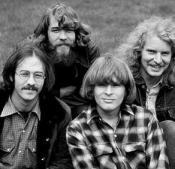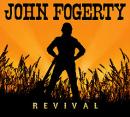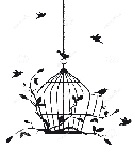There's a place up ahead and I'm goin'
just as fast as my feet can fly
Come away, come away if you're goin',
leave the sinkin' ship behind.
Bring a song and a smile for the banjo
Better get while the gettin's good
Catch a ride to the end of the highway
Where the neons turn to wood
You can ponder perpetual motion
Fix your mind on a crystal day
Always time for a good conversation
There's an ear for what you say
Catch a ride to the end of the highway
And we'll meet by the big red tree
There's a place up ahead and I'm goin'
Come along, come along with me
just as fast as my feet can fly
Come away, come away if you're goin',
leave the sinkin' ship behind.
Come on the risin' wind,
we're goin' up around the bend.
Ooh!
we're goin' up around the bend.
Ooh!
Bring a song and a smile for the banjo
Better get while the gettin's good
Catch a ride to the end of the highway
Where the neons turn to wood
Come on the risin' wind,
we're goin' up around the bend.
Ooh!
we're goin' up around the bend.
Ooh!
You can ponder perpetual motion
Fix your mind on a crystal day
Always time for a good conversation
There's an ear for what you say
Come on the risin' wind,
we're goin' up around the bend.
Ooh!
we're goin' up around the bend.
Ooh!
Catch a ride to the end of the highway
And we'll meet by the big red tree
There's a place up ahead and I'm goin'
Come along, come along with me
Come on the risin' wind,
we're goin' up around the bend.
Yeah!
Do do doo do...
we're goin' up around the bend.
Yeah!
Do do doo do...
inviata da Riccardo Gullotta - 7/5/2021 - 16:48
Lingua: Italiano
Traduzione italiana / Italian translation / Traduction italienne / Italiankielinen käännös:
Riccardo Gullotta
Riccardo Gullotta
PERDENDO LA TESTA
C'è un posto più avanti e io ci sto andando
Veloce con le ali ai piedi
Vieni via, vieni via se stai andando
Lasciati alle spalle le navi che affondano
Porta una canzone e un sorriso per il banjo
Meglio dargli un taglio sinché si è in tempo
Chiedi un passaggio sin dove arriva l'autostrada
Dove le luci al neon cedono il posto al bosco
Puoi meditare sul moto perpetuo
Libera la tua mente in una giornata di cristallo
Sempre in tempo per una buona conversazione
C'è un orecchio per ciò che dici
Chiedi un passaggio sin dove arriva l'autostrada
E ci incontreremo vicino al grande albero rosso
C'è un posto più avanti e io ci sto andando
Vieni, vieni con me
C'è un posto più avanti e io ci sto andando
Veloce con le ali ai piedi
Vieni via, vieni via se stai andando
Lasciati alle spalle le navi che affondano
Segui il vento che si alza
Stiamo per perdere la testa
Oh!
Stiamo per perdere la testa
Oh!
Porta una canzone e un sorriso per il banjo
Meglio dargli un taglio sinché si è in tempo
Chiedi un passaggio sin dove arriva l'autostrada
Dove le luci al neon cedono il posto al bosco
Segui il vento che si alza
Stiamo per perdere la testa
Oh!
Stiamo per perdere la testa
Oh!
Puoi meditare sul moto perpetuo
Libera la tua mente in una giornata di cristallo
Sempre in tempo per una buona conversazione
C'è un orecchio per ciò che dici
Segui il vento che si alza
Stiamo per perdere la testa
Oh!
Stiamo per perdere la testa
Oh!
Chiedi un passaggio sin dove arriva l'autostrada
E ci incontreremo vicino al grande albero rosso
C'è un posto più avanti e io ci sto andando
Vieni, vieni con me
Segui il vento che si alza
Stiamo per perdere la testa
Oh!
Stiamo per perdere la testa
Oh!
inviata da Riccardo Gullotta - 7/5/2021 - 17:18
Beh un grande classico, nello stesso spirito di Ballad of Easy Rider o Going Up The Country.
Lorenzo - 7/5/2021 - 17:47
Credo che il verso "Where the neons turn to wood" sia da intendere più come: "dove il neon lascia il posto al legno", mostrandoci quel luogo al termine della highway, dove la città si perde nelle campagne.
Cuchu - 14/7/2023 - 09:29
@ Cuchu
Abbiamo senz'altro accettato la tua proposta di modifica della traduzione, ma a sua volta con un'altra specificazione: probabilmente qui "wood" è proprio da intendere come "bosco, foresta". Saluti e grazie.
Abbiamo senz'altro accettato la tua proposta di modifica della traduzione, ma a sua volta con un'altra specificazione: probabilmente qui "wood" è proprio da intendere come "bosco, foresta". Saluti e grazie.
CCG/AWS Staff - 15/7/2023 - 10:58
×
![]()









[1970]
Lyrics and music / Testo e musica / Paroles et musique / Sanat ja sävel:
John Fogerty
Performed by / Interpreti / Interprétée par / Laulavat:
1. Creedence Clearwater Revival
Album: Cosmo's Factory
2. Elton John
Album: The Legendary Covers Album
Premessa
Il nome Creedence Clearwater Revival fu adottato dalla band californiana dopo il lancio del disco omonimo. Era meglio nota con il suo acronimo CCR. Il brano qui proposto era un classico negli anni della contestazione del ’68, una canzone dallo stile pacato, in realtà di dissenso, in linea con le tendenze che si facevano largo nell’universo dei giovani. Come in tanti altri brani di quel periodo, la band tentò con successo una fusione tra rock, country e altri stili. Fece seguito alla famosa Fortunate Son, un inno contro la guerra nel Vietnam.
Around the bend letteralmente significa ”dietro la curva” ma anche “ dare di testa”. Sebbene Fogerty dichiarò in una tournée che non era quello il significato, presumiamo che la precisazione fu dettata da motivi commerciali . Difatti, a parere di chi scrive, proprio attribuendo il significato idiomatico al titolo e ai versi la canzone acquista un diverso rilievo per di più coerente con le altre immagini del brano di taglio liberatorio.
La canzone viene qui proposta non per dare spazio alla vena nostalgica, legittima ma angusta, degli archeologi del ’68 ma come un auspicio a rinnovare la tensione di quegli anni per saltare oltre la siepe verso il mondo, un mondo da reinventare, non quello della globalizzazione del pensiero unico.
recensione
È il verso di chiusura della seconda strofa, " Dove le luci al neon si girano verso il bosco", che ci fa capire che "dietro la curva" è davvero un luogo fuori città. È alla “fine dell'autostrada” (che può anche rappresentare il lasciare la città alle spalle), in un habitat naturale. E sulla base di questa lettura, "la nave che affonda" che il destinatario è incoraggiato a "lasciarsi ... alle spalle" nella prima strofa sarebbe anch’essa rappresentativa della città.
Ma il brano, nella sua interezza, non va letto come un’argomentazione contro la vita urbana. Piuttosto il cantante ha trovato un luogo di "canzoni", "sorrisi", pace e "buona conversazione", e vuole che il pubblico cavalchi "il vento che sale" e raggiunga questa destinazione per condividere questa esperienza.
[ traduttore: Riccardo Gullotta]
It is the closing line of the second verse, “where the neons turn to wood”, that lets us know “up around the bend” is indeed a place outside of the city. It is at the “end of the highway” (which may also be symbolic of leaving the city behind), in a natural habitat. And based on this understanding, “the sinking ship” which the addressee is being encouraged to “leave… behind” in the first verse would also be synonymous with the city.
But the track, in its entirety, does not read like a treatise against urban living. Rather the singer has found a place of ‘songs’, ‘smiles’, peace and “good conversation”, and he wants the audience to ride “the rising wind” and reach this destination to partake of this experience.
Interpretazioni
Oltre a quella dei CCR si segnala quella di Elton John, forse più raffinata, ma meno suggestiva a nostro avviso.
Desideriamo rammentare qui anche una canzone di tutt’altro genere titolata Round the Bend of the Road del 1933, interpretata da quella grande figura che fu Paul Robeson.
[Riccardo Gullotta]